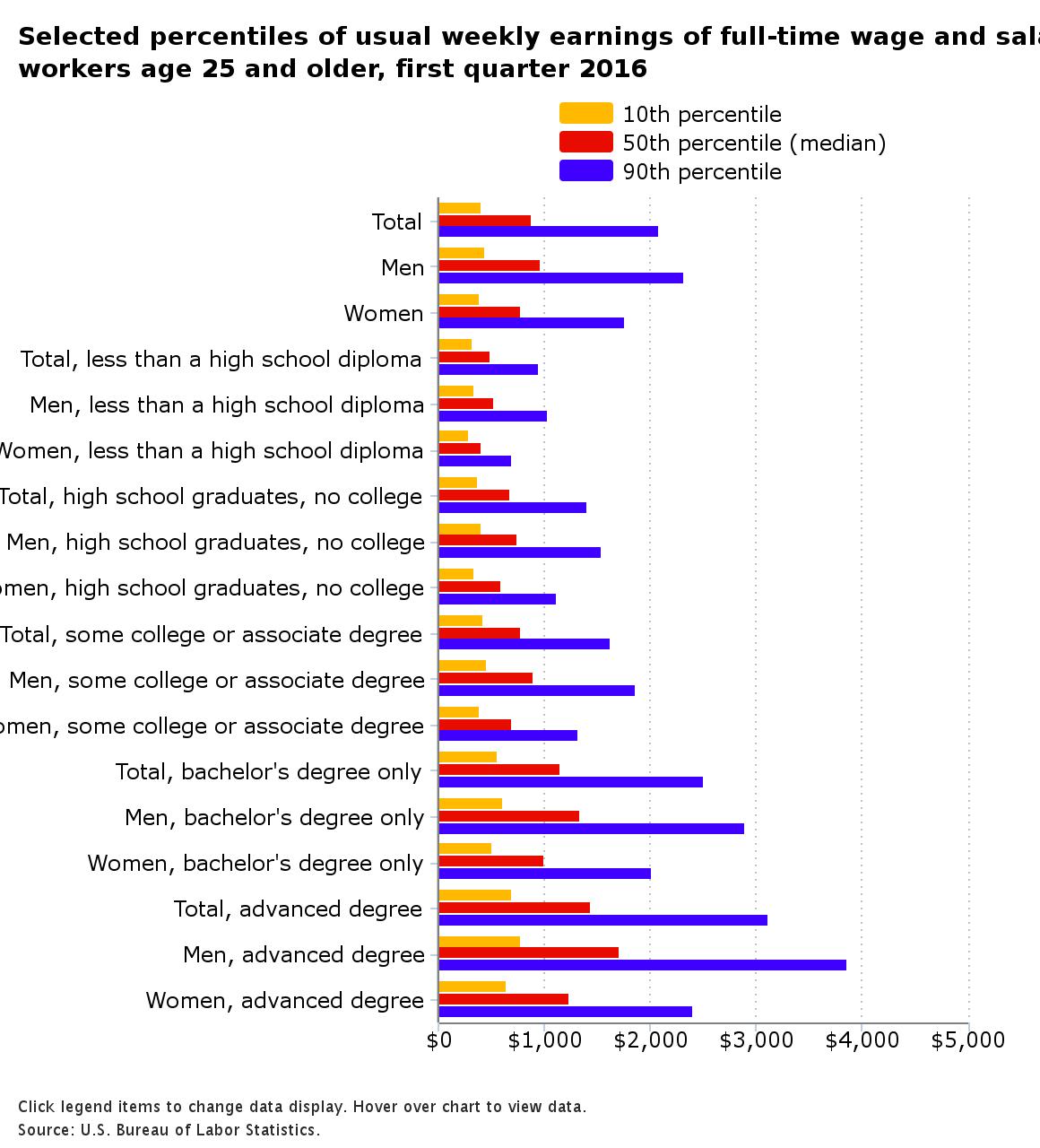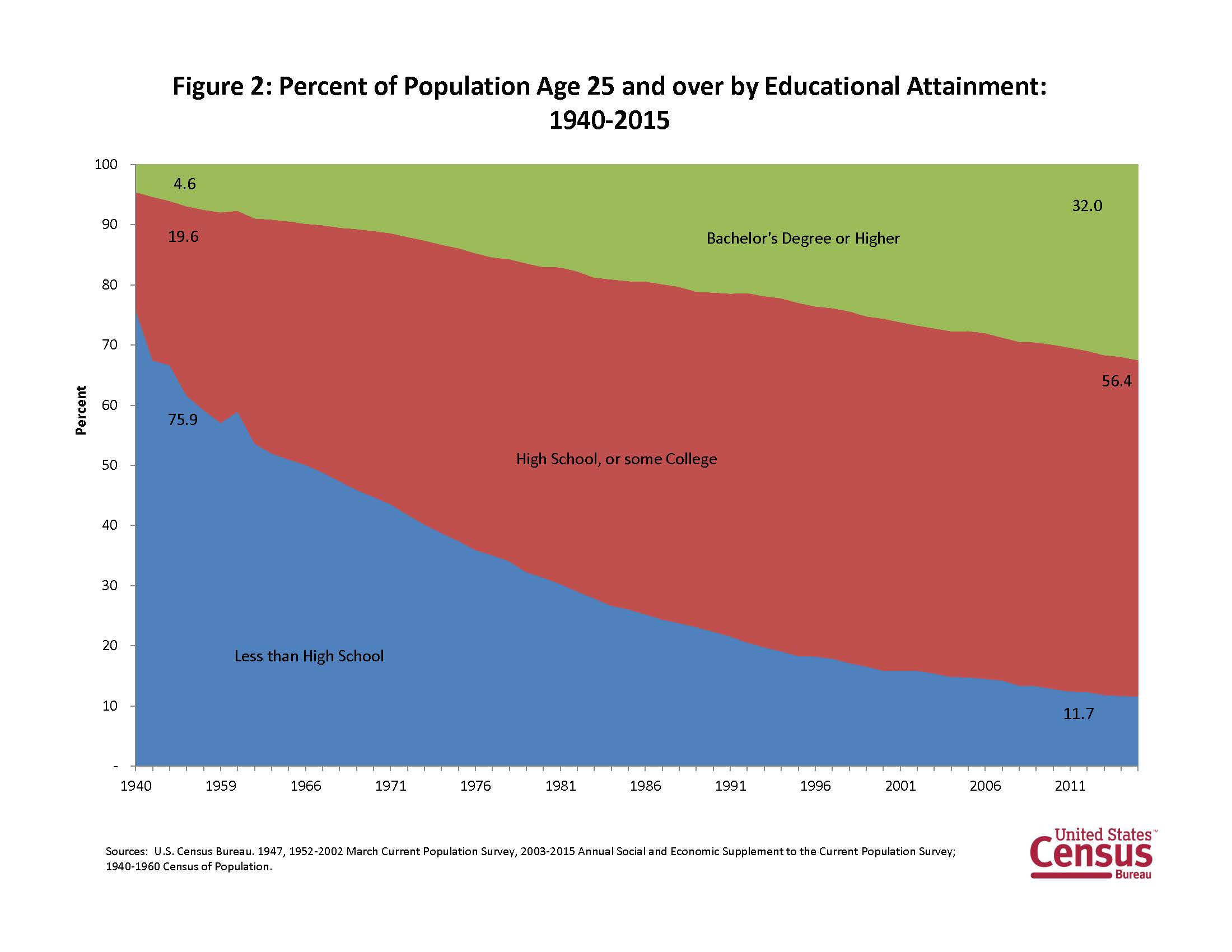What Is an Associate Degree Worth?
On our AIER discussion board, my colleague Polina Vlasenko recently posted the following chart from the BLS, which shows earnings of full-time workers by education level. Unsurprisingly, average earnings rise at every education level. (The chart cuts off some of the margins, but you get the idea.)
It is a striking chart. But what the raw statistics cannot do is determine how much of that income gap is driven by education itself. This is a classic problem in determining the monetary value of education or any other economic intervention. The groups of people in each category are different for many other internal and external reasons besides educational attainment. For example, college graduates may come from wealthier families, which may be related to other advantages besides education. These differences affect average income within the group, but individuals making their own education decisions don’t care about average differences. They want to know the best decision for their own futures.
The most commonly discussed of these decisions is whether to attend four-year college. This is important, but even today only a third of Americans over age 25 have a bachelor’s degree. For many Americans, the relevant decision after high school is whether to work toward an associate degree or other certification.
At AIER, we are in the early stages of an initiative to help provide information to working class young Americans, so today I will talk about some recent evidence on the financial returns from attending a two-year college.
In 2014, three economists at the Universities of Kentucky and Louisville published a study on this question. They were able to use administrative data from the state of Kentucky; the nature of the data set gave them a credible way to separate out the differences in student outcomes that come from student ability or circumstances from the effect of the education itself. In their models, they found consistently large wage returns for associate degrees or diplomas, around $1,500 per quarter for men and $2,000 for women, and much smaller but positive effects for certificates.
When breaking these down by area of study, however, they found these positive effects were mostly due to health-related degrees. Humanities and business degrees showed basically no earnings benefit, although in fairness those concentrations had the highest percentage of students transferring to another institutions. The data was not suitable to measure the indirect benefits of a two-year degree as a channel to eventually receive a four-year degree.
Still, this is an interesting study on an important topic. As can be seen in the charts above, economists are often guilty of grouping educational outcomes of less than a four-year degree all together. But these authors’ results, that an associate degree could be worth six or eight thousand dollars a year, speak to the important distinctions that employers can make within this group.
Click here to sign up for the Daily Economy weekly digest!










